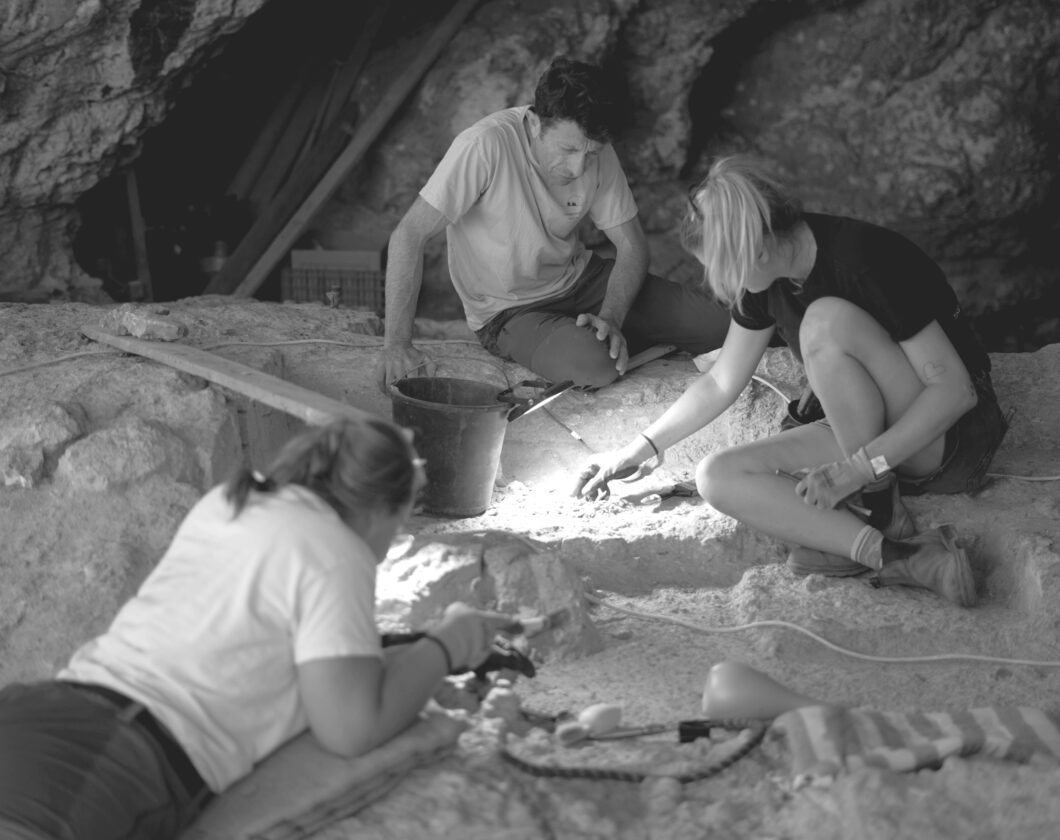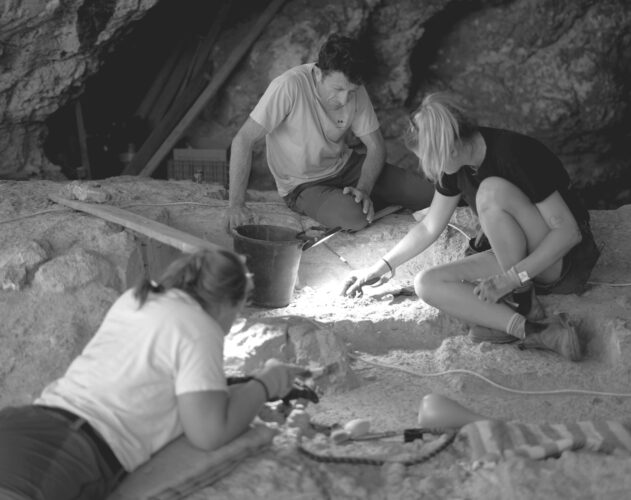100,00-year-old burial site changes thinking on early humanity

Professor of Archaeology Yossi Zaidner, center, works in Tinshemet Cave, where archaeologists are excavating one of the world's oldest known burial sites dating back 100,000 years, near Shoam, Israel, on July 15. (AP photo)
SHOHAM, Israel — Archaeologists believe they have found one of the oldest burial sites in the world at a cave in Israel, where the well-preserved remains of early humans dating back some 100,000 years were carefully arranged in pits.
The findings at Tinshemet Cave in central Israel, published in an academic journal earlier this year, build on previous discoveries in northern Israel and add to a growing understanding of the origins of human burial.
Of particular interest to archaeologists are objects found beside the remains that may have been used during ceremonies to honor the dead and could shed light on how our ancient ancestors thought about spirituality and the afterlife.
“This is an amazing revolutionary innovation for our species,” said Yossi Zaidner, one of the directors of the Tinshemet excavation and a professor of archaeology at Hebrew University in Jerusalem. “It’s actually the first time we are starting to use this behavior.”
Archaeologists working at Tinshemet since 2016 have discovered the remains of five early humans that date back to around 100,000 to 110,000 years ago, according to various technologies.
The skeletons were discovered in pits and carefully arranged in a fetal position, which is known as a burial position, said Zaidner. Many were found with objects, such as basalt pebbles, animal remains or fragments of ochre, a reddish pigment made from iron-rich rocks.
These objects, some sourced from hundreds of miles away, had no known practical use for daily life, so experts believe they were part of rituals meant to honor the dead.
A window into early human burials
Tinshemet Cave is a dark slash in central Israel’s rolling hills filled with squeaking fruit bats. Inside and around the cave is an unassuming stone mound which Zaidner calls “one of the three or four most important sites for study of human evolution and behavior during the Paleolithic time.”
The Paleolithic era, also known as the Stone Age because of the onset of stone tools, lasted from as early as 3.3 million years ago until around 10,000 years ago. Tinshemet Cave is from the Middle Paleolithic era, roughly between 30,000 to 250,000 years ago.
Some of the Tinshemet researchers’ core findings were published in March in Nature Human Behavior. A key discovery were the remains of five early humans, including two full skeletons and three isolated skulls with other bones and teeth. Also of note were more than 500 differently sized fragments of red and orange ochre, a pigment created by heating iron-rich stones to a certain temperature — evidence that early humans had the means to create decorative objects.
“Here we see a really complex set of behaviors, not related to just food and surviving,” Zaidner said.
A window into a little-known period
Tryon said the Tinshemet findings are bolstering earlier discoveries from two similar burial sites dating back to the same period in northern Israel — Skhul Cave and Qafzeh Cave. Skhul Cave was excavated almost 100 years ago, and Qafzeh Cave mostly around 50 years ago, when archaeological practices were more haphazard.
“There were so many uncertainties with those sites, but this is confirming it’s a pattern we know, and they’re really nailing down the dates,” Tryon said.
Tinshemet has helped archaeologists conclude that burial practices started to become more widespread during this time, representing a shift in how early humans treated their dead.






